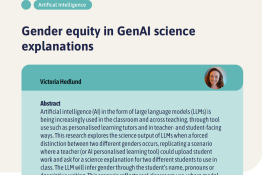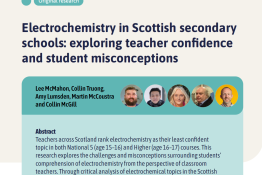Practical tools for teaching scientific literacy through verbs
Issue 395 | Page 47 | Published Nov 2025
Description
Henry Ward shares a linguistic–rhetorical approach to building higher-order literacy skills in science.
Resource production
To make your own resources, please go to the ChatGPT School Scientific Article Resource Producer:
https://chatgpt.com/g/g-67fe1a6947208191a3059826001533b3-school-scientific-article-resource-producer.
Be careful: the model makes mistakes and will produce generic activities that do not always target the language you want your students to think about. Always double-check before use in the classroom. The worksheet is particularly prone to wandering away from focusing on the verbs.
References
Dwyer, C. P. ( 2017) Critical Thinking: Conceptual Perspectives and Practical Guidelines. Cambridge: Cambridge University Press.
Education Endowment Foundation (2021) Improving Secondary Science: Guidance Report.
https://educationendowmentfoundation.org.uk/education-evidence/guidance-reports/science-ks3-ks4
Hand, B., Norton-Meier, L. A., Gunel, M. and Akkus, R. (2016) Aligning teaching to learning: a 3-year study examining the embedding of language and argumentation into elementary science classrooms. International Journal of Science and Mathematics Education, 14(5), 847–863.
More from this issue
Abstract
Practical work can play a very important role in the teaching and learning process in school science in...
Abstract
Artificial intelligence (AI) in the form of large language models (LLMs) is being increasingly used in the...
Abstract
Teachers across Scotland rank electrochemistry as their least confident topic in both National 5 (age 15–16) and...




